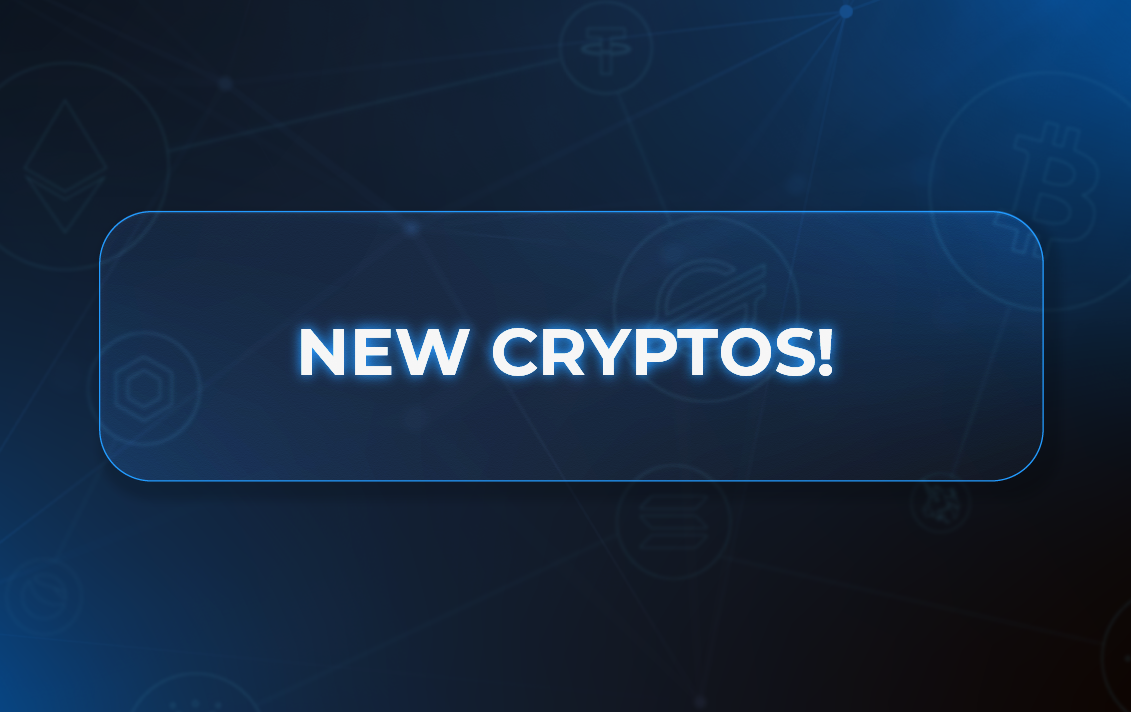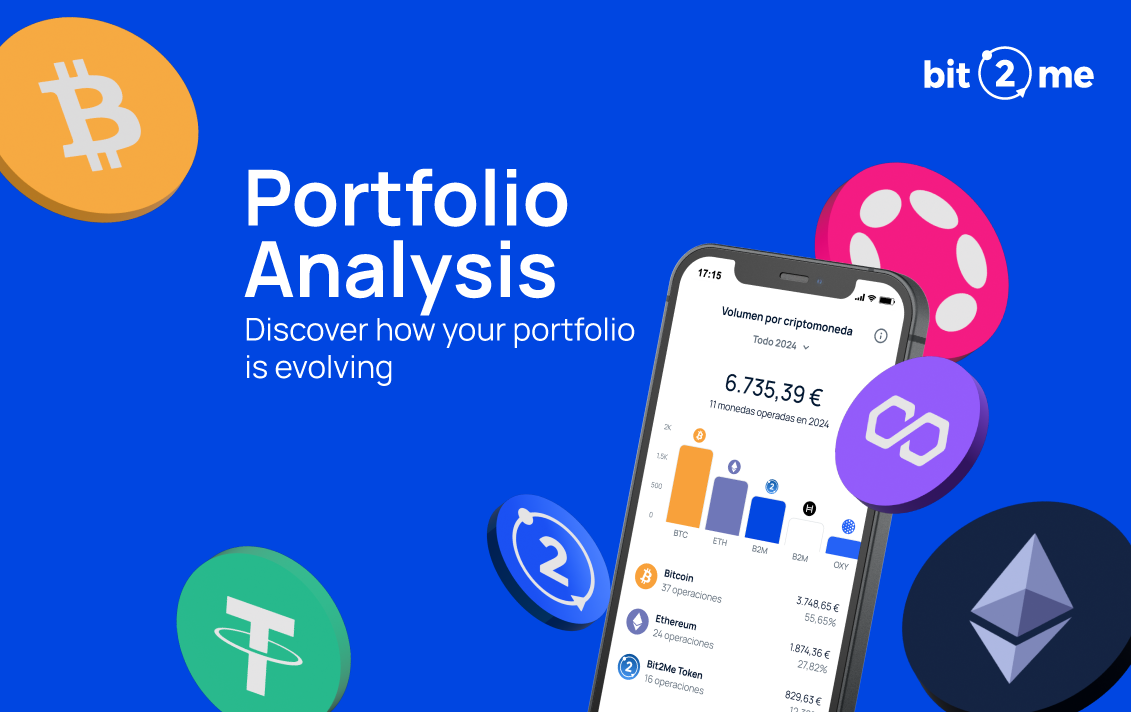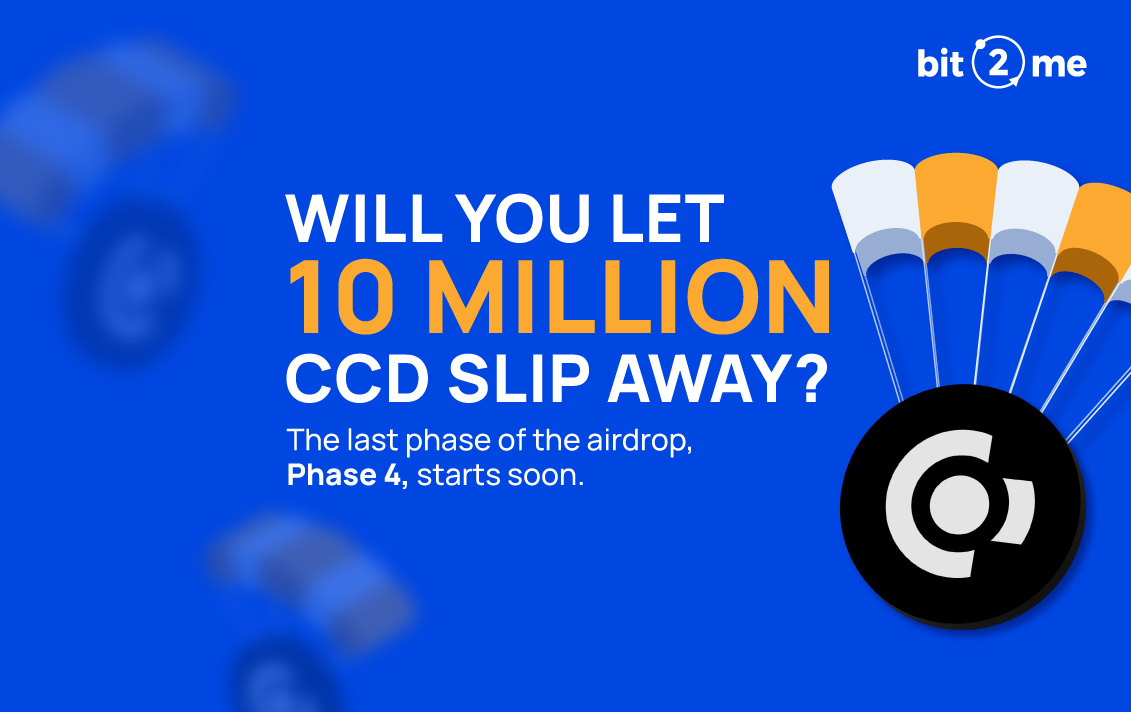At Bit2Me we are always looking for ways to expand our range of products and services to improve accessibility to cryptocurrencies and the blockchain ecosystem. Therefore, on this occasion, we have listed 15 new cryptocurrencies and tokens that are now available in our wallet.
Among the new cryptos available we have SWEAT, ERG, RVN, IOST, LDO, STX and a dozen more.
With these new cryptocurrencies, we continue to offer a wide variety of options to access and explore the full potential of the crypto world. In total, we offer accessibility to a total of 182 cryptocurrencies and tokens from our platform.
Get to know the new cryptocurrencies available at Bit2Me
Sweat Economy (SWEAT)
Sweat Economy is a next-generation fitness lifestyle platform and mobile app that currently has 120 million registered users. The aim of this project is to incentivise a healthy lifestyle among users by encouraging physical activity through financial incentives.
In Sweat Economy, the SWEAT token, native to the platform, is generated by the movement of users registered through the app. Holders of this token can access many benefits within the mobile app, such as: staking with SWEAT for extra returns and rewards, using the token to earn NFTs or accessing enhanced features in the Sweat Economy wallet app.
Ergo (ERG)
Ergo is a next-generation smart contract platform designed to create secure, accessible and decentralised financial tools. Ergo’s goal is to power the blockchain-based finance of the future, enabling financial freedom for ordinary people.
This platform was launched in 2019 and has since grown into a rich ecosystem of dapps. Its native token, ERG, can be mined using common GPUs, thanks to its proof-of-work Autolykos algorithm, which is resistant to ASIC mining.
Flux (FLUX)
Flux is a blockchain protocol focused on building a truly decentralised computational data network for the Web3. The Flux ecosystem is composed of a network of decentralised oracles, providing reliable and high quality data for the next generation of the Internet. This ecosystem is also integrated by a next-generation decentralised node network, the FluxOS operating system built on Linux, a blockchain bridge, called Flux Fusion, which facilitates accessibility to major DeFi protocols and a self-custodial wallet called Zelcore.
The FLUX token, which is also part of this blockchain ecosystem, is used for the governance of the project. FLUX is a proof-of-work token that can be mined on the network using GPUs.
Celer Network (CELR)
Celer Network is a blockchain-based second-layer scalability and interoperability protocol that offers fast and secure off-chain transactions. The goal of this project is to provide users with accessibility to the rich ecosystem of DeFi, GameFi and NFT tokens and protocols that are built on multiple blockchains.
The protocol supports 37 blockchains, including popular blockchains such as Bitcoin, Ethereum, Avalanche, Harmony and others. Currently, the Celer Network supports 136 tokens. Celer’s native token, CELR, is used to ensure the security and stability of the blockchain network through staking.
Quant (QNT)
Quant is built as the first operating system focused on multi-blockchain interoperability. This project uses Overledger Network to connect different blockchains and allow developers to build decentralised multi-chain applications or connect different applications within the same ecosystem. All this with the aim of solving blockchain interoperability problems, without affecting its security or efficiency.
Its native QNT token is the network utility token, which is used to pay the costs of performing read and write operations on Overledger.
SelfKey (KEY)
SelfKey is a decentralised identity ecosystem built for the Metaverse and the Web3. This protocol, developed by the SelfKey Foundation, seeks to build new digital identity systems that allow users to have full control of their data, documents and digital assets, while transforming the way identity-based transactions are managed and processed.
The SelfKey protocol has a native token, called KEY, which is used to interact with the protocol and to purchase a variety of commercial and financial services on it.
Ravencoin (RVN)
Ravencoin is a peer-to-peer blockchain created for the efficient transfer of assets. This blockchain was born as a fork of the Bitcoin code by adding specific features for issuing and transferring assets, such as security tokens or other assets, which can be created in a matter of minutes and traded worldwide through this network.
The RVN cryptocurrency is used as Ravenchain’s internal utility token and is burned every time tokenised assets are issued on the blockchain.
Voyager Token (VGX)
The VGX token is the native brokerage token of Voyager, a cryptocurrency broker designed to facilitate cryptoasset trading. Within the Voyager platform, the VGX token is used to reward users and investors for staking with the token and when trading. In addition, Voyager also has a loyalty program that allows users to increase the rewards generated by keeping VGX tokens deposited on the platform.
As a broker, Voyager offers its users the ability to build and manage a portfolio with a wide number of cryptocurrencies, while connecting to more than a dozen crypto exchange platforms.
Lido DAO (LDO)
Lido is a participation platform that allows users to staking with different cryptoassets, such as ETH, SOL and DOT, among others, to generate rewards with it. It is a liquid participation platform that seeks to boost the staking economy in a simplified and secure way, while helping to support the decentralization and stability of proof-of-stake networks.
Its native token, LDO, is Lido’s utility and governance token and is used to exercise voting rights in Lido DAO, as well as manage tariffs and node operators within the platform.
Stargate Finance (STG)
Stargate Finance is a liquidity transport protocol that ensures instant finality in your trades. This protocol, developed in Omnichain DeFi, allows users to transfer and exchange native 1:1 assets between chains, while accessing Stargate’s unified liquidity pools to aggregate liquidity to different pools and farm LP tokens.
The STG token serves several functions within Stargate Finance. Among them, as a stake token to ensure the security of the network and receive rewards in veSTG, Stargate’s governance token that holders can use to vote within the protocol.
IOST (IOST)
Iost is a decentralized, high-performance blockchain network that is designed for enterprise use, thanks to the high level of speed and scalability it offers. As a blockchain, Iost allows users to perform ultra-fast, scalable and secure transactions thanks to its Proof-of-Believability (PoB) consensus algorithm, which is combined with other technologies such as sharding and TransEpoch, among others. As a result, this network is capable of processing between 8,000 and 100,000 transactions per second.
The goal of this blockchain is to provide a superior, robust and open source infrastructure that is optimal for the development of the decentralized economy. On Iost developers can build ultra-fast and scalable applications using the popular JavaScript language.
Boba Network (BOBA)
Boba Network is a layer2 scalability solution created for the development of decentralized applications or multi-chain dApps. Like Optimism, Boba Network uses Optimistic Rollup to ensure high transaction throughput, reduce gas tariffs by up to 100 times and extend smart contract capabilities.
The BOBA token is the project’s governance token, which allows its holders to influence the direction of Boba Network, submit governance proposals and participate in community initiatives through a DAO.
Casper (CSPR)
Casper Network is a decentralized, permissionless blockchain based on the proof-of-stake consensus protocol, which is designed to accelerate the global adoption of blockchain technology and drive Web3 development. This blockchain was the first to be built from the Casper CBC framework, so it focuses on enterprise-level blockchain adoption while maintaining the essential components of usability, cost, decentralization and security on the blockchain, while adapting to the needs of its developers and operators.
Thanks to the PoS consensus algorithm, Casper Network is an energy efficient network. Its ecosystem is composed of a variety of CeFi protocols, DeFi, games, NFT, oracles, staking pools, wallets and more. The CSPR token is the reward token that validators receive for participating in the network consensus and is also used to pay commission costs and fees in Casper.
Stacks (STX)
Stacks is a blockchain designed to bring smart contracts, dapps and NFTs to the Bitcoin network, in order to make it a more powerful blockchain. This project was born with the promise of unlocking Bitcoin’s potential, allowing developers to leverage the capabilities of this blockchain to execute contracts, dapps and other projects with the same security that has characterized Bitcoin since its inception.
On Stacks, holders can stack their native STX token to receive rewards in BTC. This blockchain also uses a proprietary consensus model, called proof-of-transfer (PoX), which allows BTC holders to mine STX tokens using the market-leading cryptocurrency.
MetisDAO (METIS)
MetisDAO is a layer 2 blockchain protocol designed to run DeFi projects, NFT, decentralized social networks, blockchain games, yield farming and more, with the goal of building new decentralized economies.
MetisDAO’s infrastructure, which integrates the Decentralized Autonomous Enterprise (DAC) framework, is designed so that any developer, with much, little or no blockchain experience, can easily and simply build, manage and administer applications.




